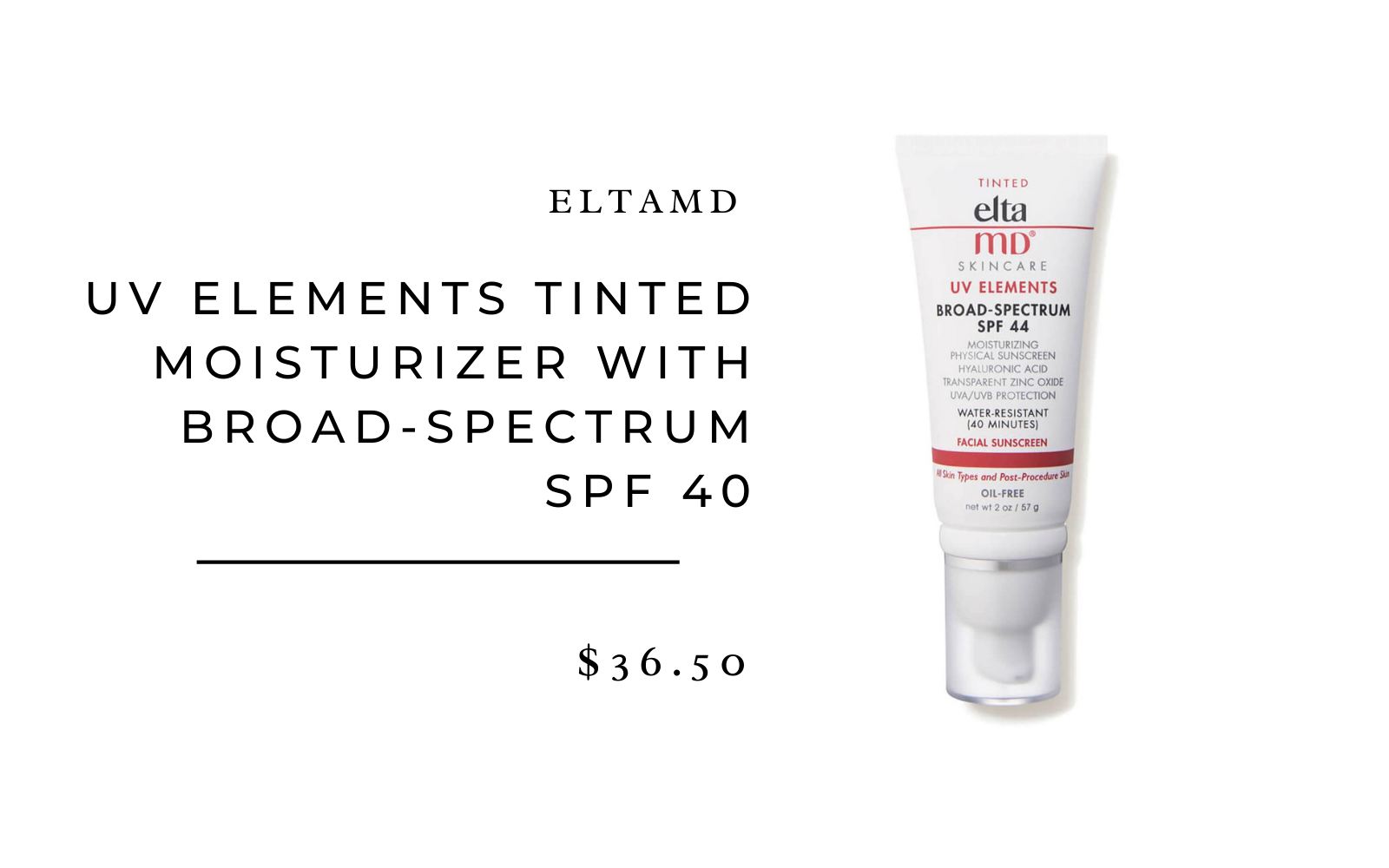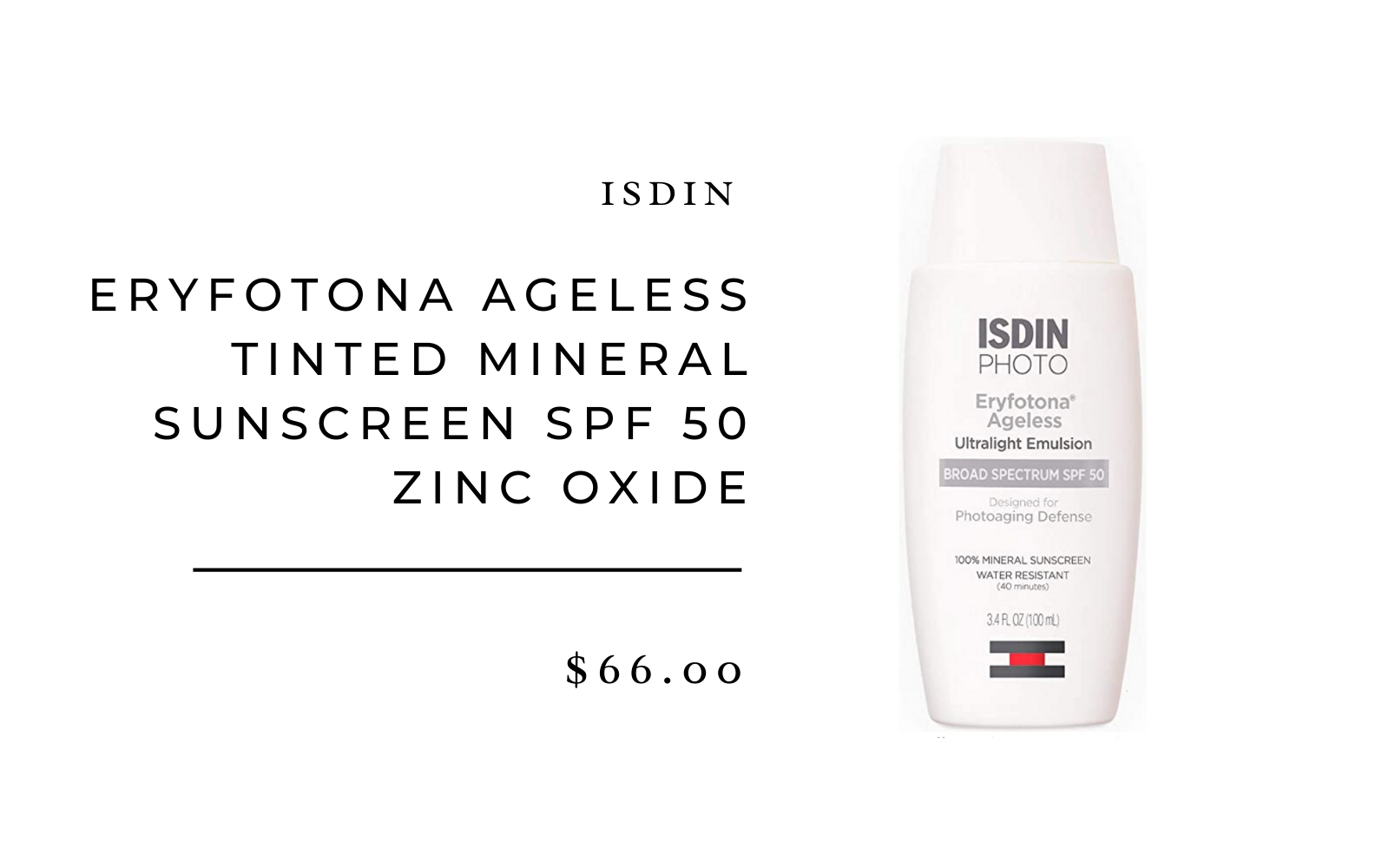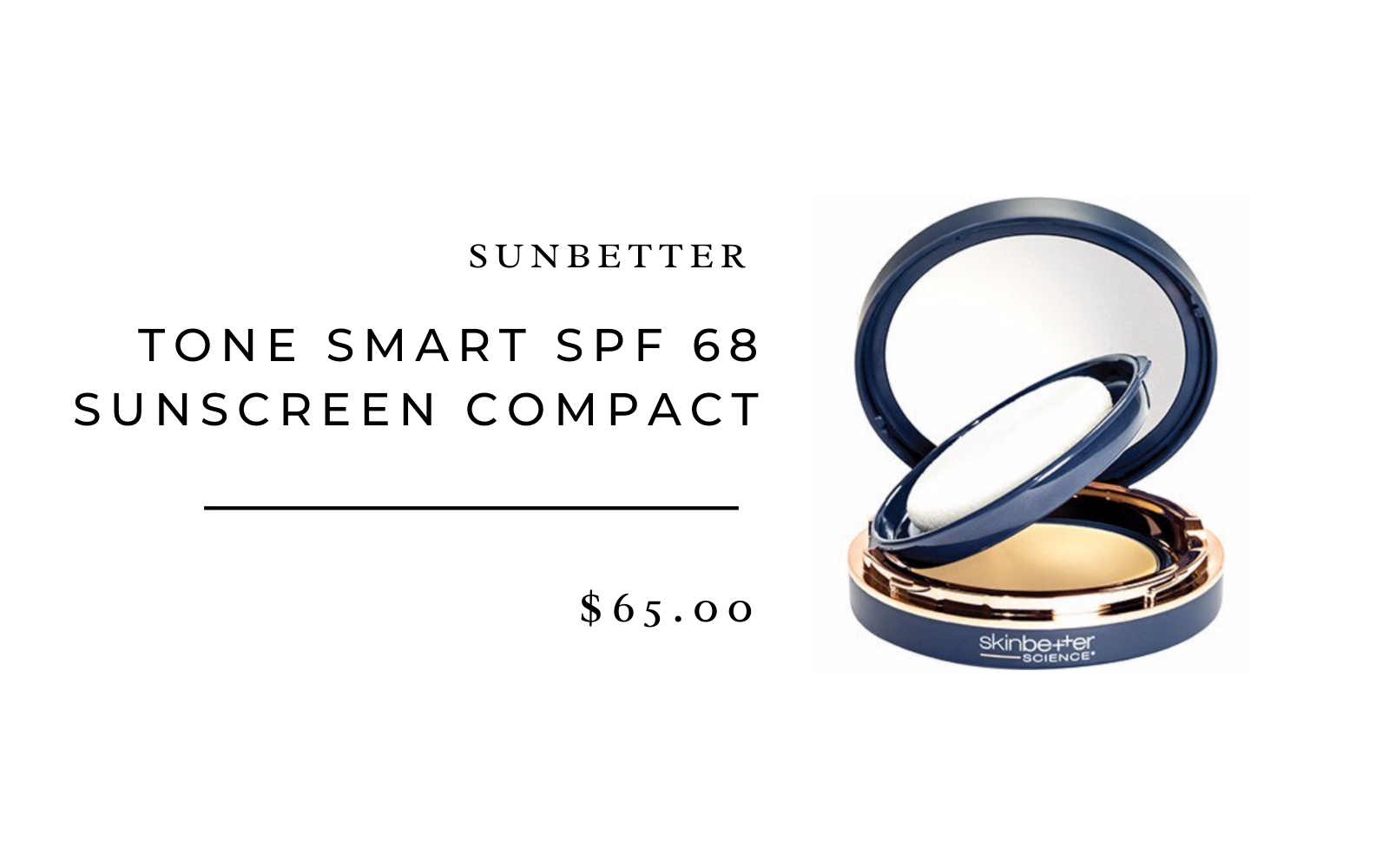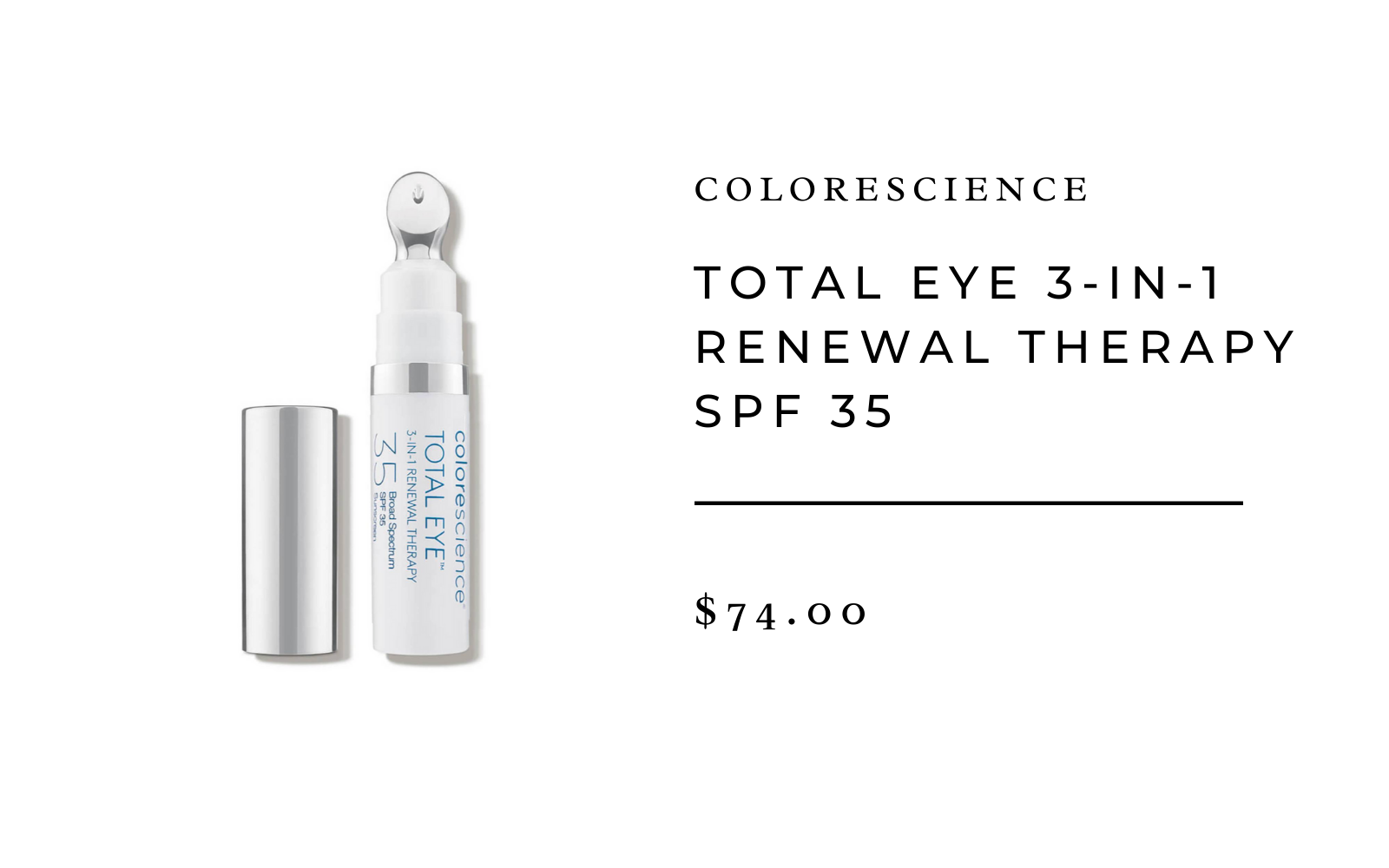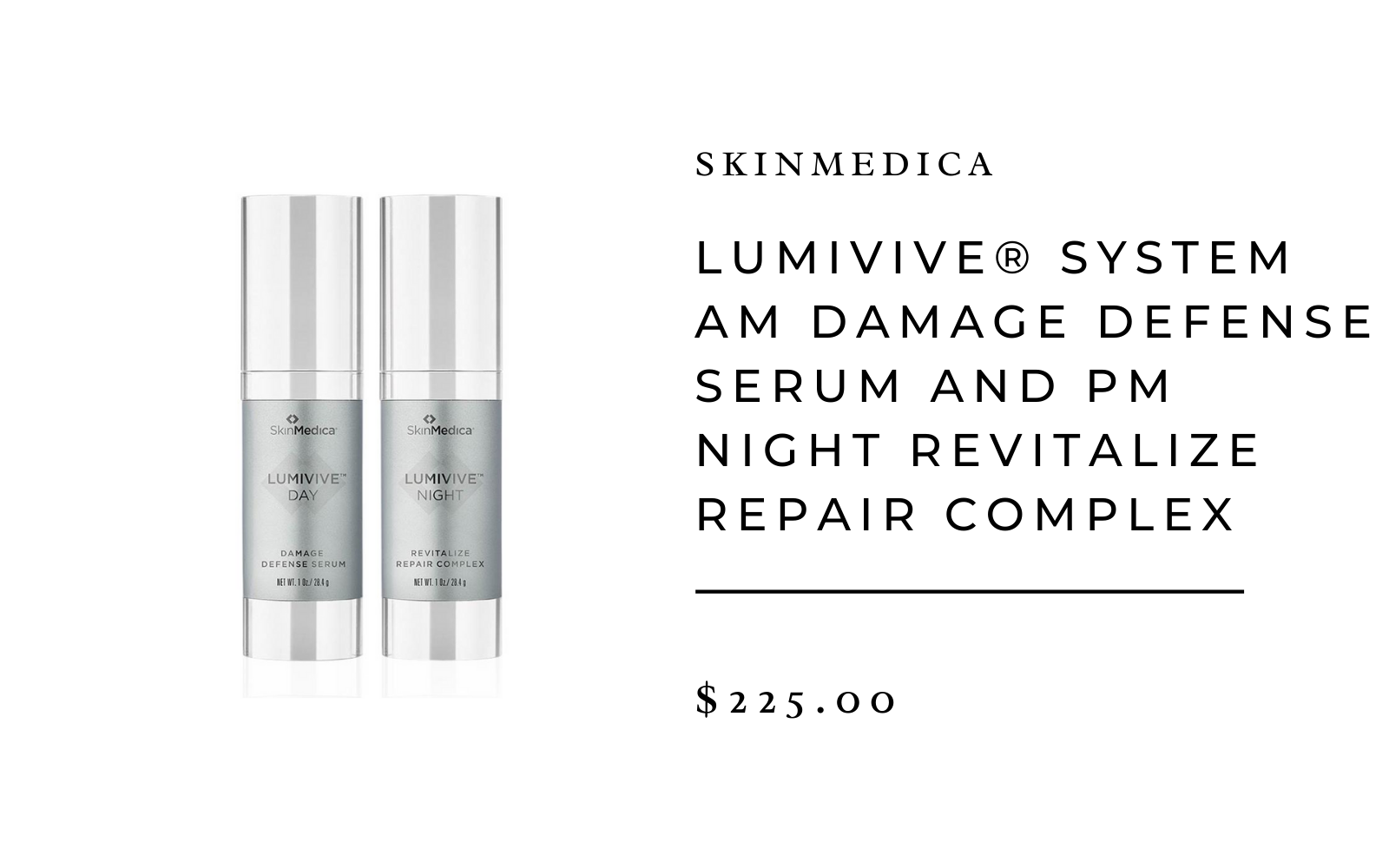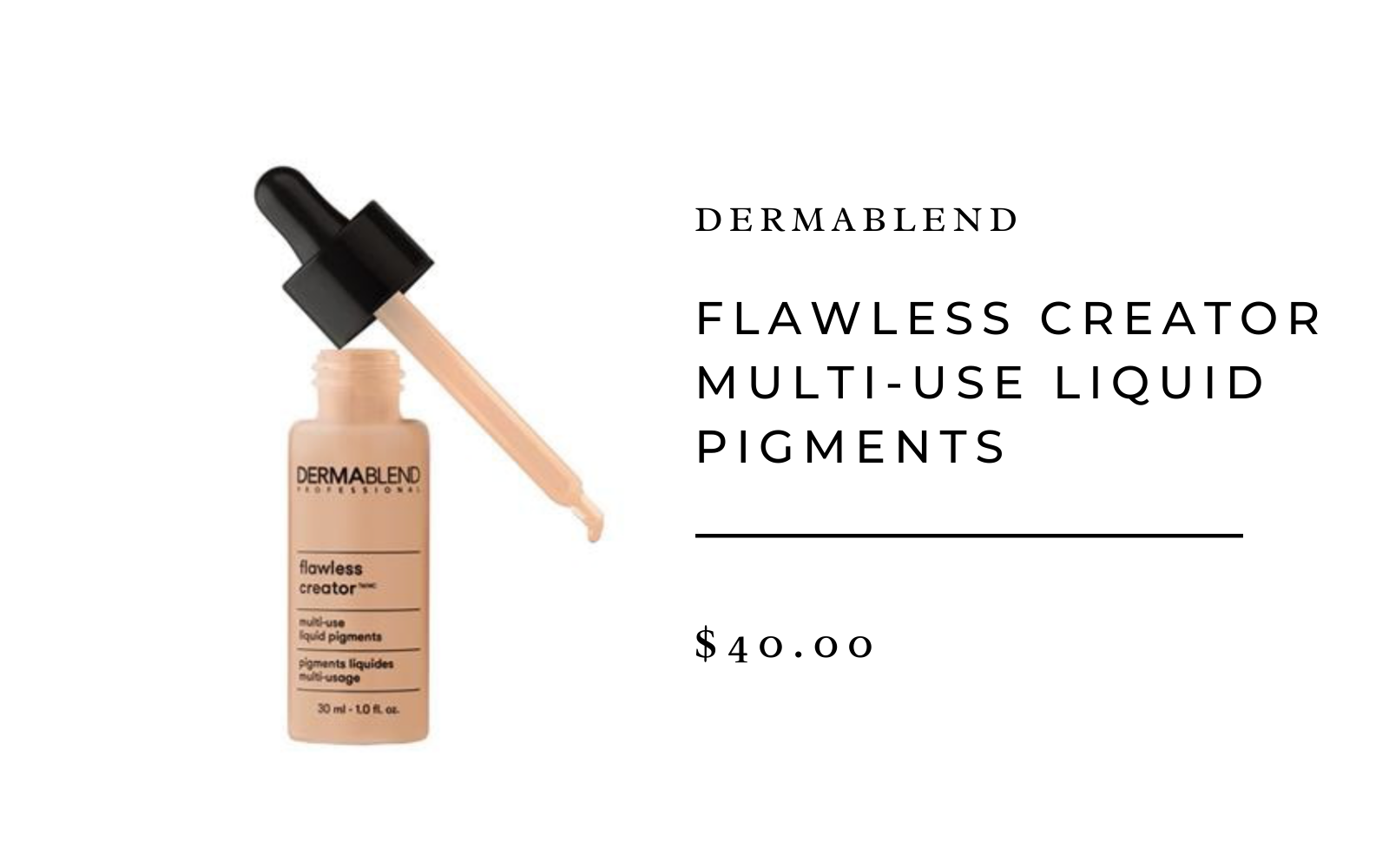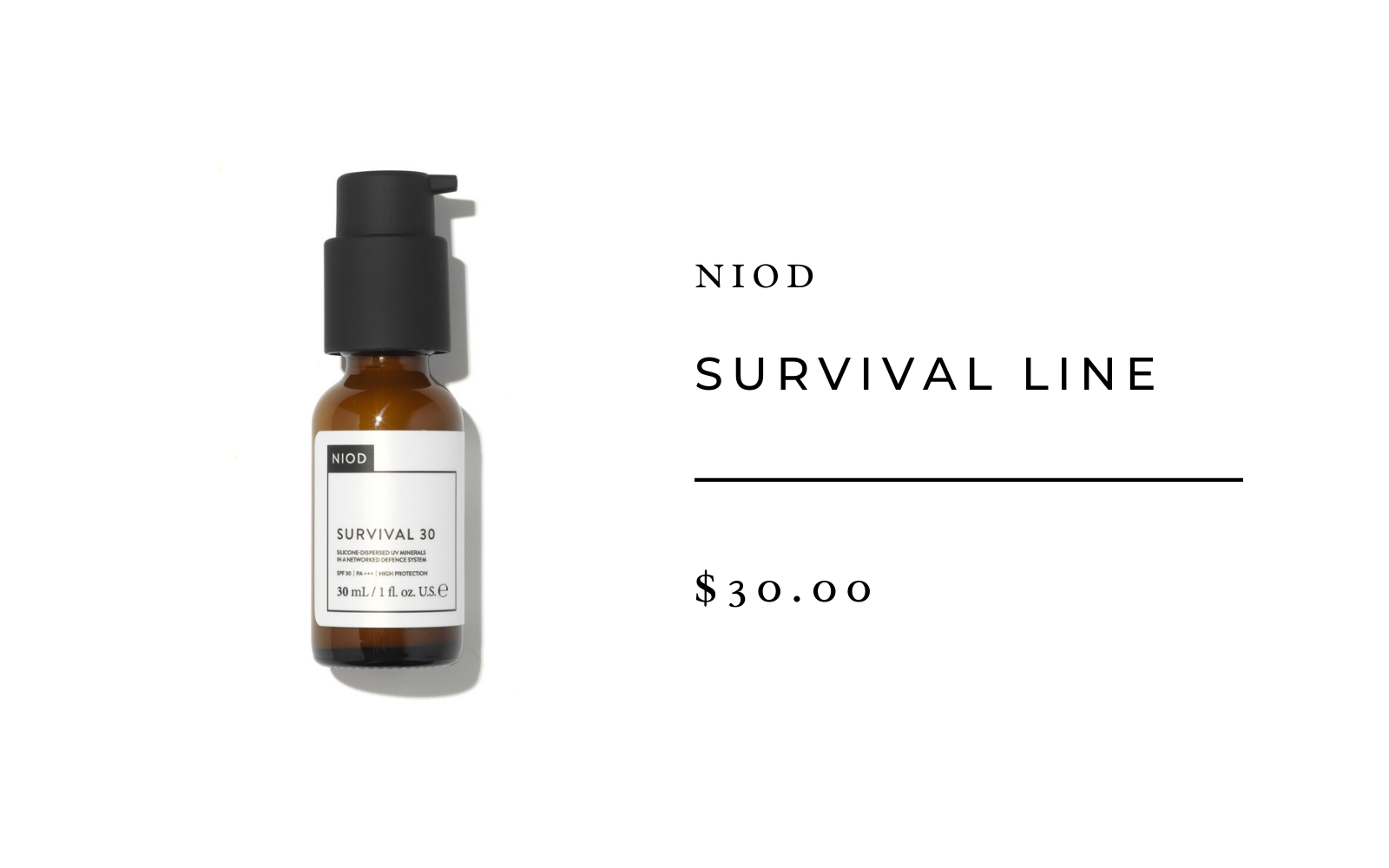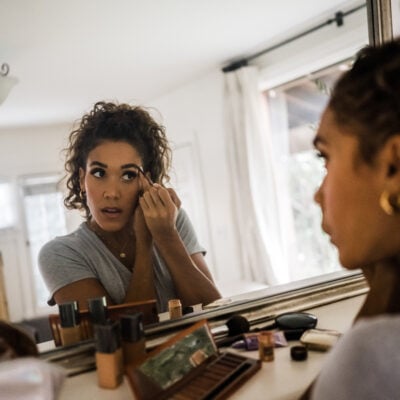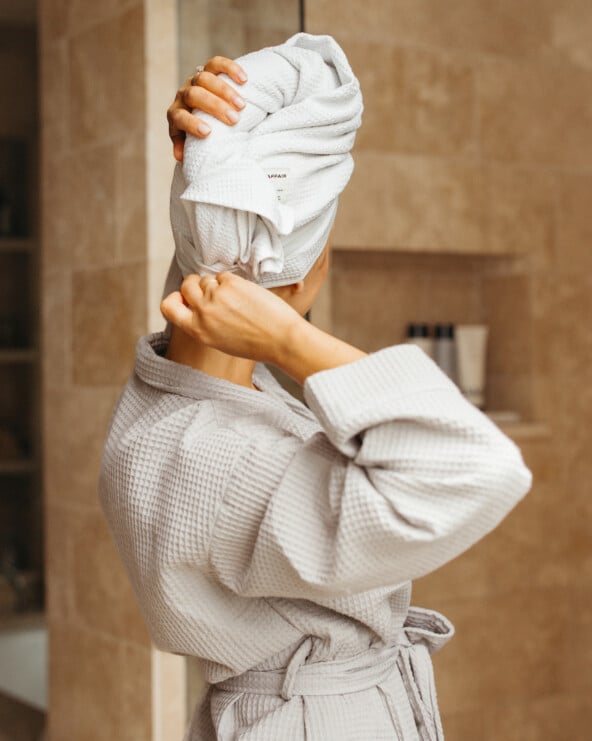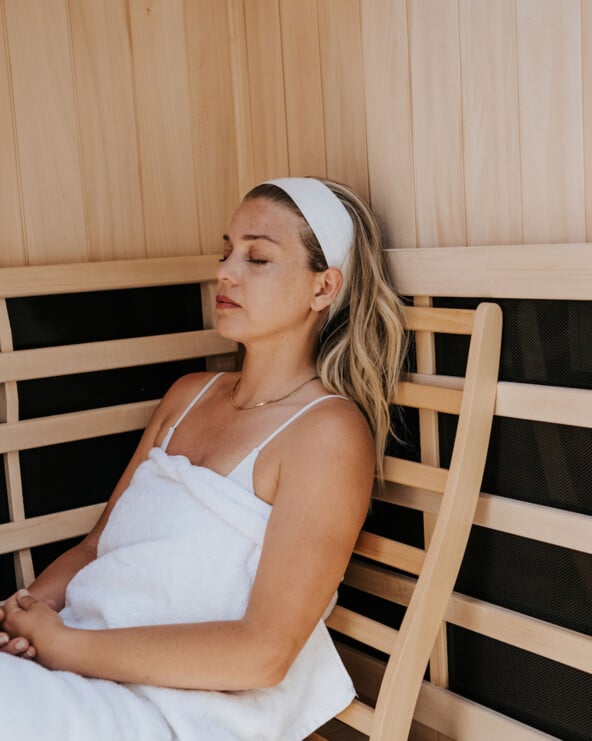A decade ago, the idea of blue light’s effects on our skin wasn’t exactly a topic of conversation, much less a buzzy beauty trend. But it’s no surprise that our device use and screen time have drastically increased—top smartphone users currently spend 4 hours and 30 minutes per day on their devices—which leads us to our next question: is blue light bad for your skin health? Of course, the beauty industry answered the call with blue light skincare. We’re talking serums, toners, mists, and sunscreens all geared at protecting your skin from blue light’s effects. But are they necessary and more importantly, do they work?
Our evenings have been illuminated by artificial light for a while and most of us know by now that long exposure to blue light can negatively impact our vision and our sleep (get out those blue-light-blocking glasses!). But some research has even indicated that blue light could disrupt our circadian rhythm which can lead to an increased risk for depression, cancer, diabetes, heart disease, and obesity. With that in mind, it’s little wonder we have questions when it comes to our skin’s health as well.
So with blue light blocking beauty products popping up everywhere, we had to know how blue light affects the skin and are the products all they’re cracked up to be. If you’re wondering the same thing, we’ve got answers from a board-certified dermatologist, Dr. Geddes-Bruce. She answered all our burning blue light skincare questions, and surprised us with her answers!
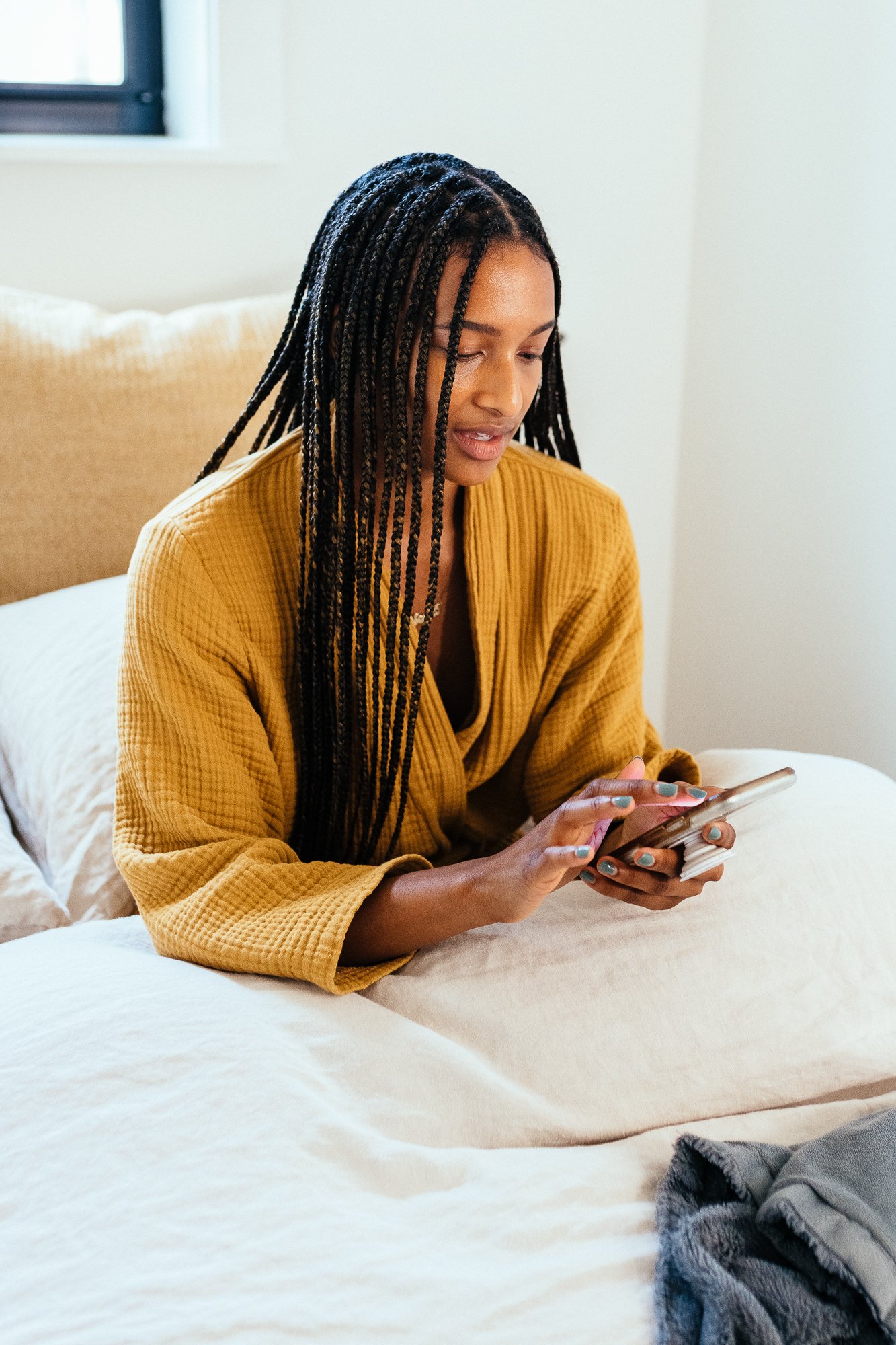
First things first, what exactly is blue light?
The visible portion of the electromagnetic spectrum is made of up light of all the colors of the rainbow (opposed to things like microwaves, which we can’t see). Of the visible lights, blue light has one of the highest energies. Sources of blue light include indoor lighting (both fluorescent and LED), digital screens like your iPad or smartphone, and even the sun, so it’s impossible to escape some exposure. And right now it’s a hot topic—scientists are trying to understand exactly how blue light affects our eyes, influence our mood, our sleep, and even our skin!
What are other damaging lights and how do they relate to each other?
Of course, not all types of light are potentially harmful to our skin. There is a higher concern with the potential to damage eyes and skin in particular when you progress along the spectrum to lights with shorter wavelengths and higher energies. “The most notorious damaging form of light is ultraviolet light, which is past blue (and violet) on the spectrum in the invisible portion,” says Dr. Geddes-Bruce. “Ultraviolet light is the main cause of photoaging (think wrinkles and brown spots) and skin cancer. Whereas heading in the other direction on the spectrum we see the opposite effect—red, orange, and yellow lights are being studied for their benefits in wound healing and collagen stimulation.”
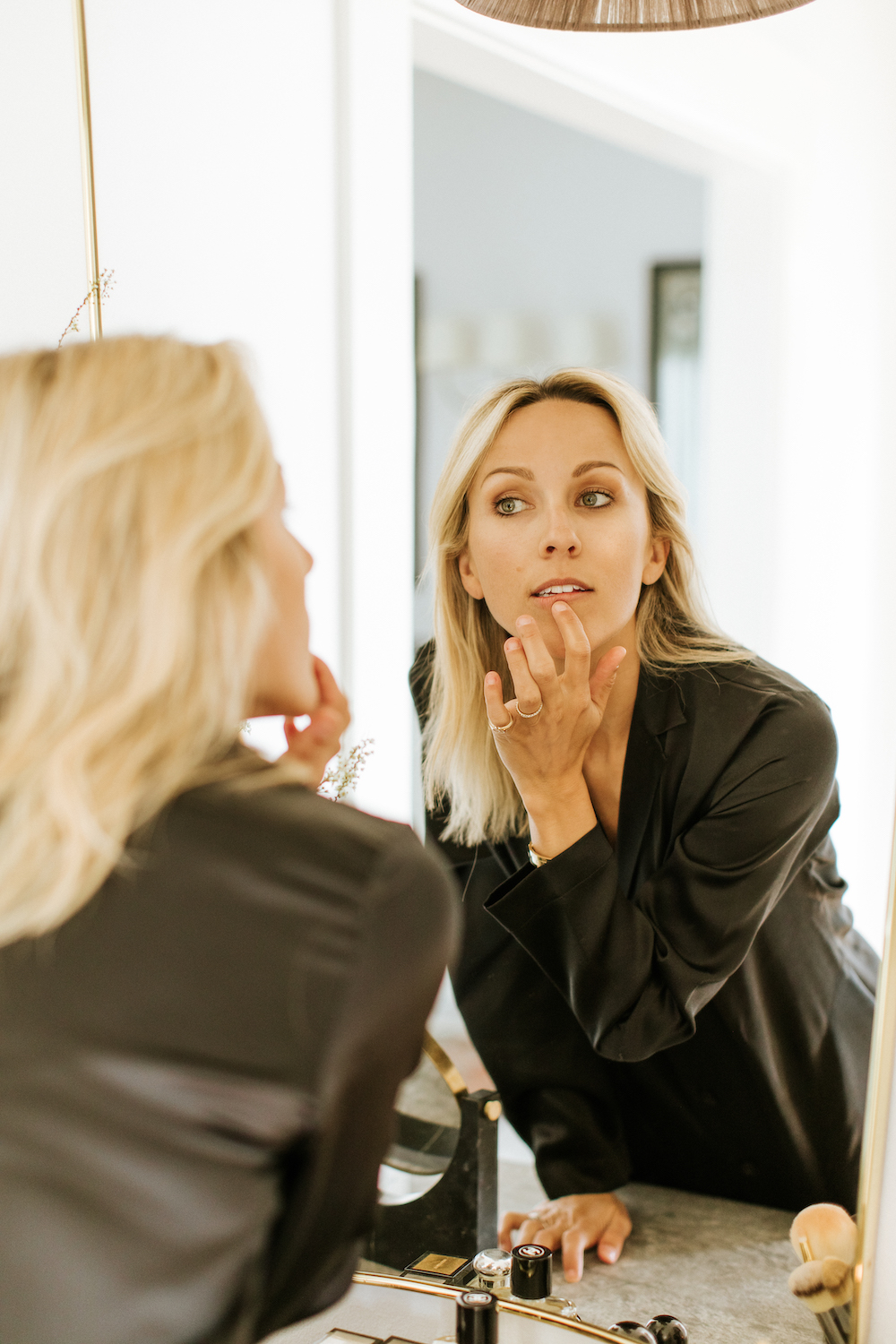
So does blue light negatively affect our skin health?
It’s not quite a simple yes or no answer. Dr. Geddes-Bruce explains that our relationship with blue light (skin-wise) is a little complicated and needs further studying. There is some potential harm that can come from blue light. It may be responsible for triggering some pigmentary conditions in the skin, such as melasma, and in some skin types may lead to more brown spots and overall increased aging. On the other hand, though, some evidence has shown that blue light may also help kill bacteria on the skin that causes acne. So if you’ve seen a blue light setting on your LED light mask, that’s why! Just maybe avoid using that color setting before bed.
Are all kinds of blue light damaging to our skin?
Dr. Geddes Bruce assures me that larger sources of blue light (like the sun) are likely much more damaging than what you’re exposed to when checking a text message, but the more time we spend looking at our screens, the more we need to consider if that additional exposure is clinically significant.
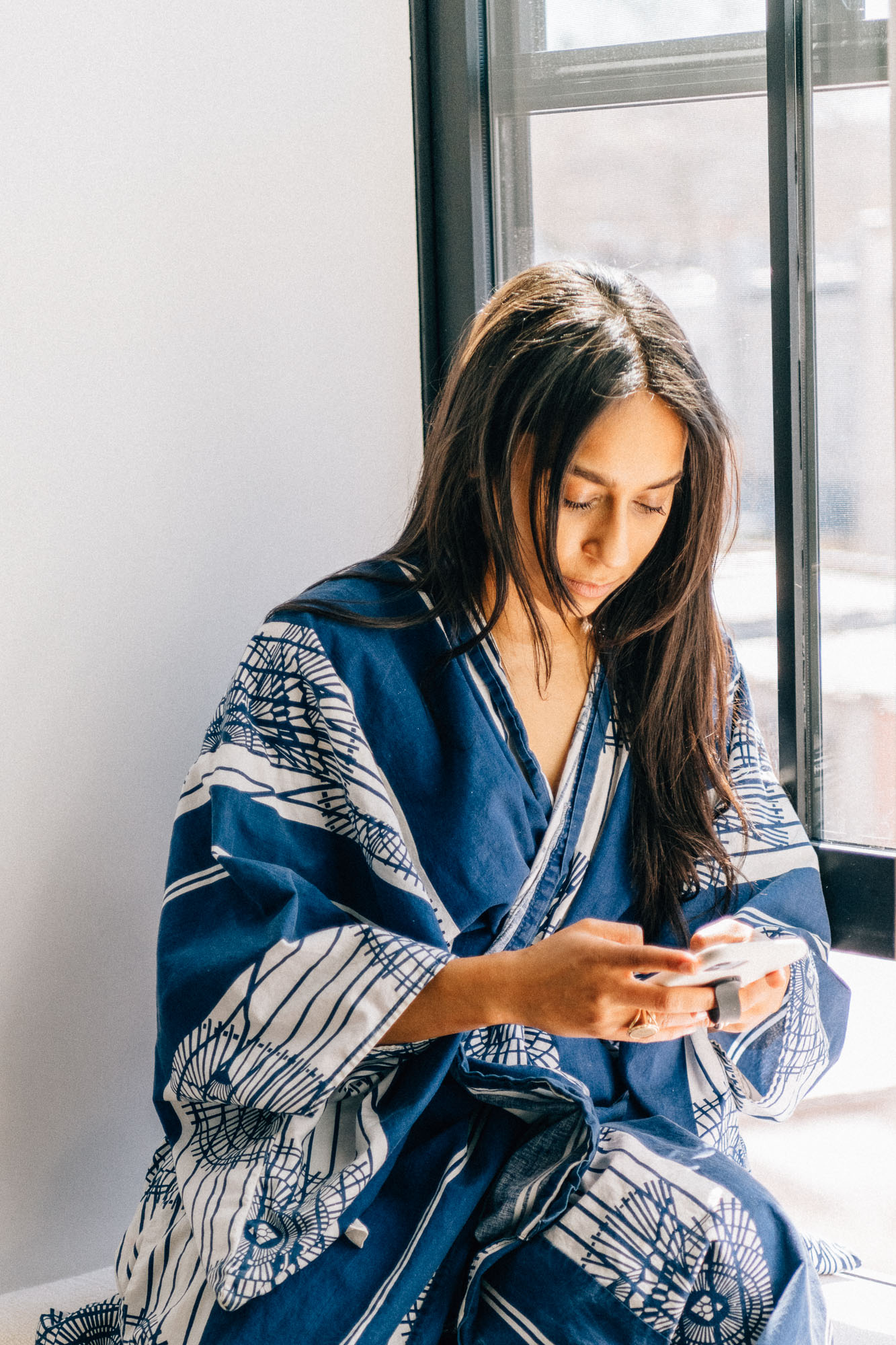
If you spend a lot of time in front of screens, is it more important to incorporate blue light protection into your routine?
Probably, but there’s no need to panic and spend hundreds of dollars on blue-light-blocking products. It certainly doesn’t hurt to use filters and protection though. You may see benefits in your skin, eyes, mood, and circadian rhythm/sleep pattern.
Any tips for reducing blue light exposure in other ways?
Dr. Geddes Bruce has the night shift blue light filter on her iPhone almost all day. “It makes everything appear a little warmer (so don’t go online lipstick shopping with it turned on—I’ve made that mistake), but is an easy way to limit one source of frequent exposure, especially in the evenings,” she says. Don’t forget about your computer screen too, it’s quite simple to adjust the screen warmth. Look at reducing your screentime in the evenings when it can affect your melatonin production the most (and melatonin production affects your skin).
Dr. Geddes Bruce’s other hot tip for avoiding blue light exposure on the skin is to wear sunscreens that specifically block that portion of the visible spectrum, like ones that contain iron oxides.
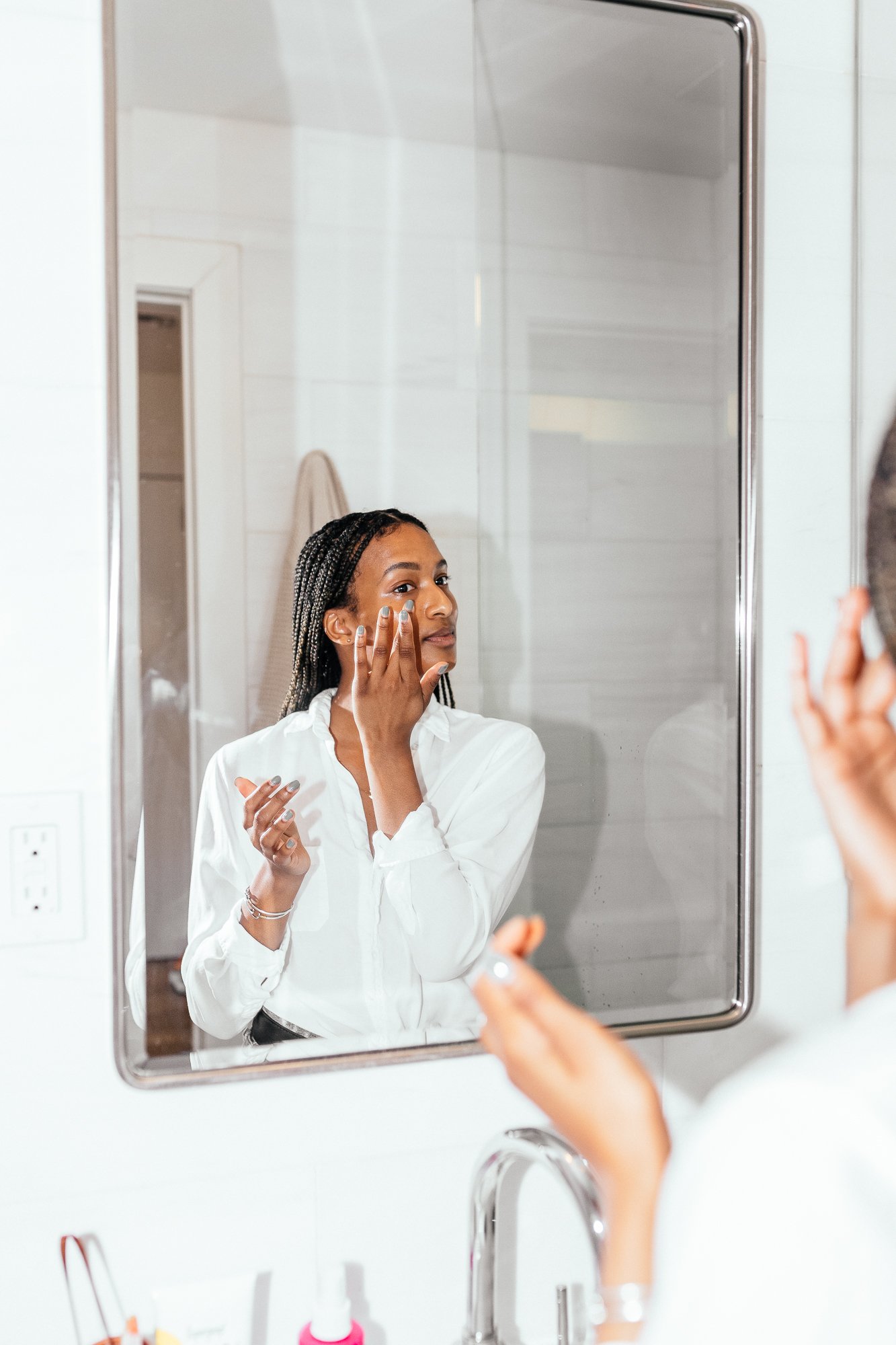
How do anti-blue light damage products work?
Some contain particles that block blue light (like the iron oxide Dr. Geddes Bruce mentioned before) and others contain ingredients that fight the damage of blue light. She says to look for ingredients like antioxidants, as well as polyphenols/flavonoids, and there’s even a type of seaweed shown to benefit the skin’s regenerative process.
The best products for blocking blue light:
Since you get more blue light exposure from a 20-minute walk in the sun than all day on your smartphone, Dr. Geddes Bruce says your best line of defense is still a sunscreen that blocks visible light. Pick one that is a physical blocker and, importantly, tinted to know you are getting the correct type of protection.
Read on for her favorites:
Physical Sunscreens
EltaMD UV Elements Tinted Moisturizer with Broad-Spectrum SPF 44
With hyaluronic acid to promote moisture retention and minimize the appearance of fine lines, this is a derm favorite. Zinc oxide and titanium dioxide provide gentle, chemical-free sun protection while antioxidant protection combats skin-aging free radicals.
ISDIN Eryfotona Ageless Tinted Mineral Sunscreen SPF 50 Zinc Oxide
This innovative formula uses 100% mineral SPF 50 sunscreen, an innovative blend of peptides, antioxidants, and photolyase enzymes to repair existing sun damage and reduce the appearance of fine lines and wrinkles.
Sunbetter Tone Smart SPF 68 Sunscreen Compact
A unique compact formula, the SunBetter Tone Smart Sunscreen offers broad spectrum SPF 68 protection through a mineral, tone-adapting formula that seemlessly blends with most skin tones. Lightweight, soft and silky, and long lasting, it has staying power for up to 80 minutes before needing to be reapplied.
Extra Blue-Light Blocking Skincare
ColoreScience Total Eye 3-in-1 Renewal Therapy SPF 35
A 3-in-1 therapy that works as a depuffing eye cream, daily sunscreen, and highlighter/concealer contains ingredients that work to block blue light and protect the delicate under-eye area
SkinMedica LUMIVIVE® System AM Damage Defense Serum and PM Night Revitalize Repair Complex
A potent combination of day and night antioxidants designed especially for young skin and targeted to preventing and fixing damage from high energy blue light, pollution, ozone, and the sun.
Dermablend Flawless Creator Multi-use Liquid Pigments
This is a very versatile product. You just add a drop or two to your favorite sunscreen to provide more coverage/camouflage imperfections and protect from blue light. A little goes a long way!
Contains a whole list of impressive ingredients such as Lutein and pycnogenol that protect against environmental stressors like blue light and more.



